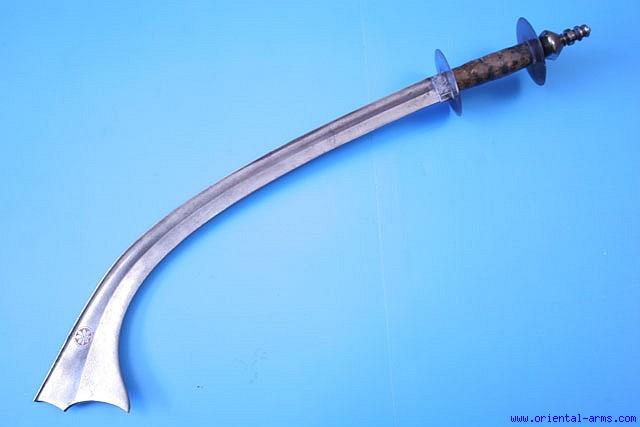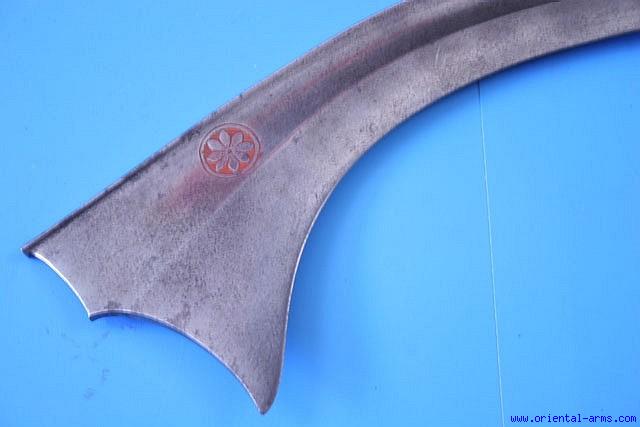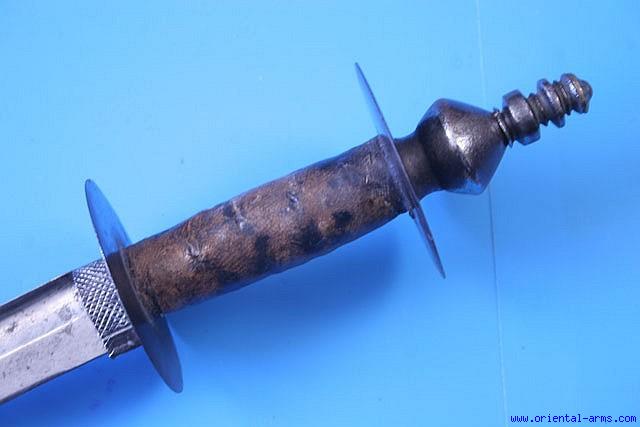The first example in an Indian kora witha typical Indian tulwar hilt.
Courtesy of Ashoka Arts
"A good quality old Indian weapon similar to the Nepalese kora. Steel hilt retaining very attractive silver damascened decoration in excellent condition, heavy steel blade with thickened 't-section' spine with forward leaning broadening tip which is missing a corner, otherwise excellent condition. North India, 19th century."
[ Download ]
[ Download ]
[ Download ]
[ Download ]
[ Download ]



